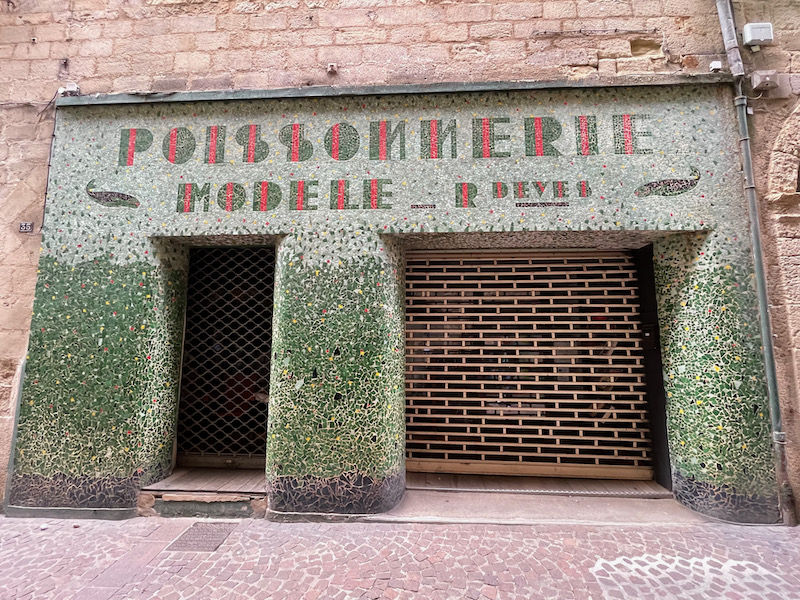Our Blog - Loire Valley Trip - Figeac
Figeac was our middle-of-the-day stop on Day 1 of our Loire Valley trip. In the Middle Ages, Benedictine monks founded an abbey in 838 on the current site of the Saint-Sauveur church. Peasants and craftsmen settled around the abbey and a city was born. The people of Figeac developed trade, exporting local products. Starting in the end of the 12th century, the bourgeois built houses that revealed their wealth and taste for comfort. In the 13th and early 14th centuries, Figeac was one of the most prosperous towns in Southern France. The city had many churches and the merchants became rich trading their luxury products internationally. Their magnificent residences are marked by Gothic art which constitute one of the treasures of the city. Although the prosperity of Figeac died out during the Hundred Years War, the architecture of medieval houses remained. From the 17th century, Figeac experienced a new wealth and the nobility of the country built classical-style mansions in the city and the churches received sumptuous baroque decorations. In the 19th century, the city was modernized but lost a part of its medieval heritage. At the end of the 20th century, the quality of historic architecture was finally recognized, protected, and restored.
The historical center has a very medieval feel to it, with lots of stone houses with Gothic arches on the ground floor, some with half-timbered upper floors, and narrow winding streets. For example, the sculpted portal in the 2nd picture dates from the 14th century. As you walk around, sometimes you find interesting little things, like these 2 sculpted dogs, over athe door of a building.
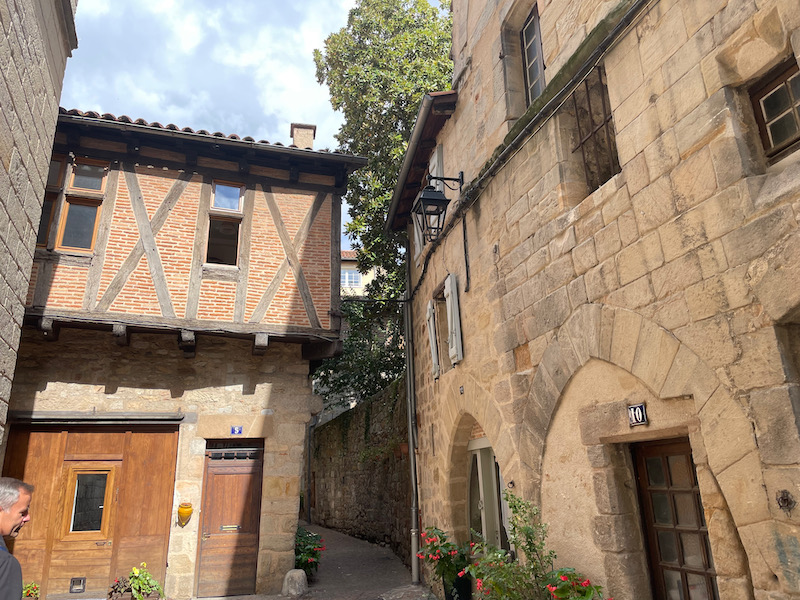
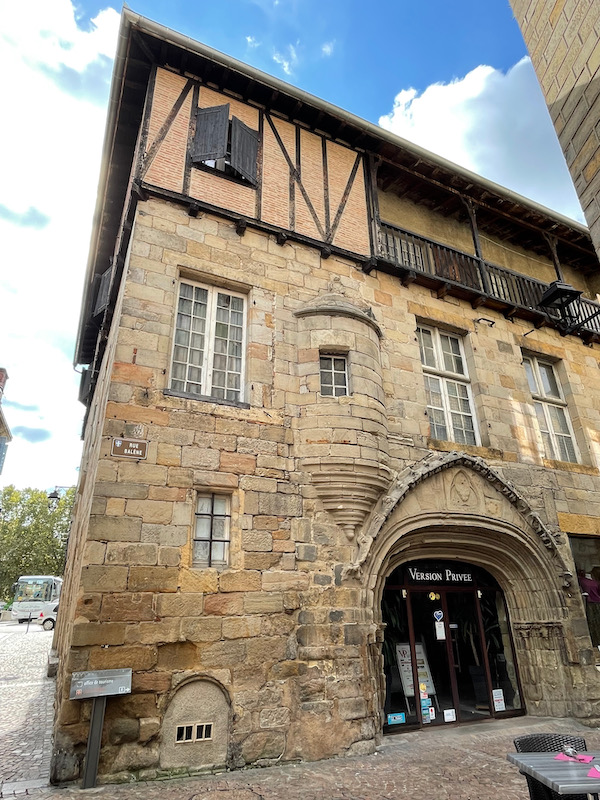
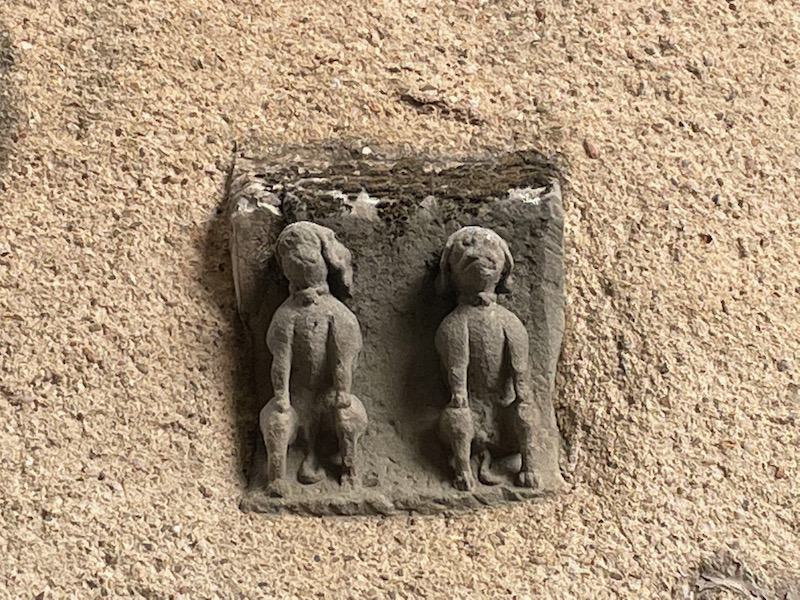
The House called the Hôtel de la Monnaie currently houses the Office of Tourism. This medieval merchant's house was mistakenly listed in the 19th century as a minting workshop. The sculpted decoration and architecture are characteristic of the residences of the wealthy bourgeois of the time of Saint Louis. On the ground floor, large pointed arches opened onto the shop. Upstairs, the living room is lit by a series of windows decorated with foliage and flowers. This decor illustrates the transition from the Romanesque to the Gothic style in medieval housing.
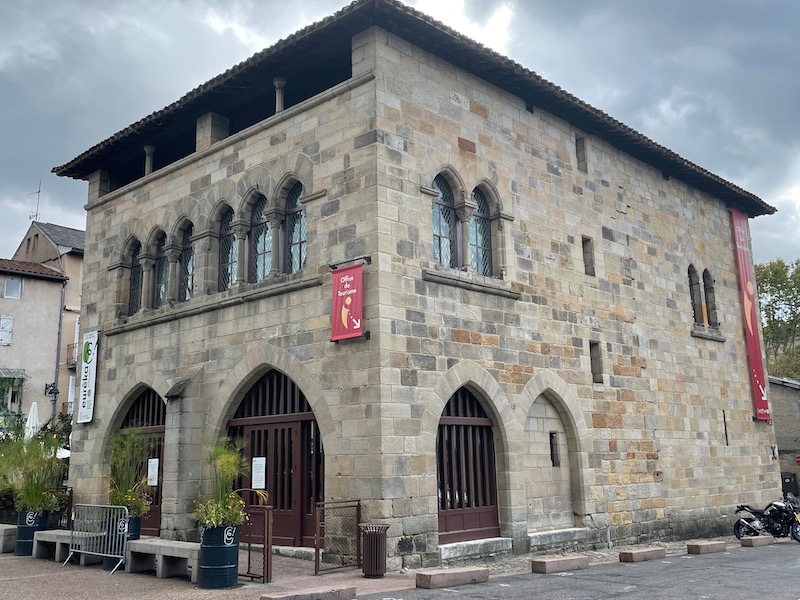
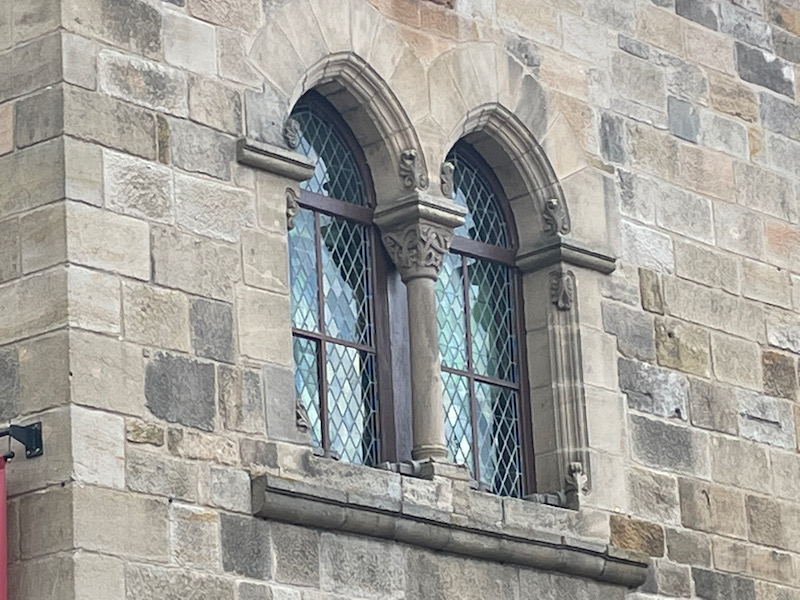
This house was so large, it was difficult to get a picture of it. If you didn't know better, you would have thought it was a church, based on the doorway and a few of the windows. It is, in fact, the largest medieval residence in town. Built on the eve of the Hundred Years War, it was the residence of a noble family close to royal power. This urban palace was organized around an interior courtyard.
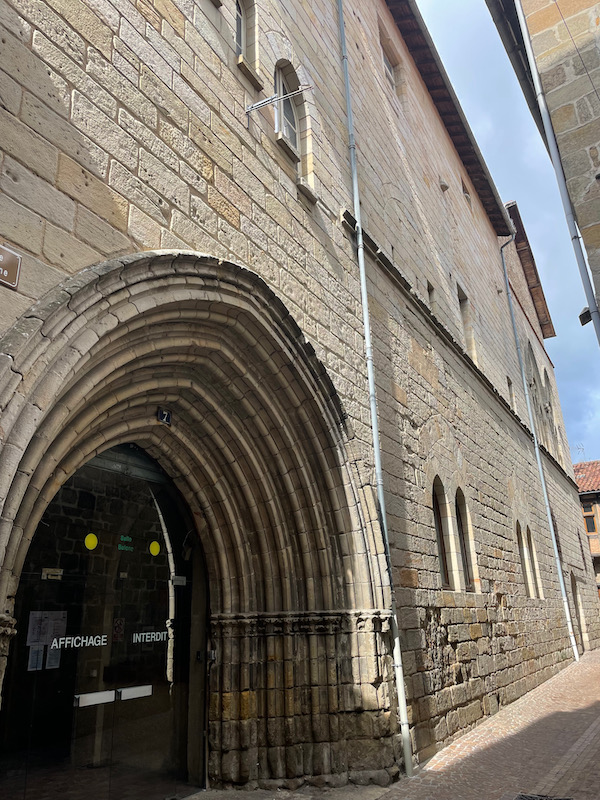
The Benedictine abbey, Saint-Sauveur Abbey, was founded in 838 by King Pépin I of Aquitaine and is the basis for the founding of the city. The current building was built slowly, from the 11th to the 14th century, and mixes Romanesque and Gothic styles. During the Wars of Religion, the Calvinists attempted to destroy the abbey by placing pieces of wood under the pillars and setting them on fire. It almost worked, as the pillars and the vaults collapsed. When peace was restored, the Protestants rebuilt the church, attempting to reuse stone elements that remained undamaged. The 18th century reconstruction was done using Gothic style, but you can actually see Romanesque capitals sitting on top of Gothic columns. Heavily damaged during the Wars of Religion, the abbey was restored and received a fine set of historiated stained-glass windows in the 19th century
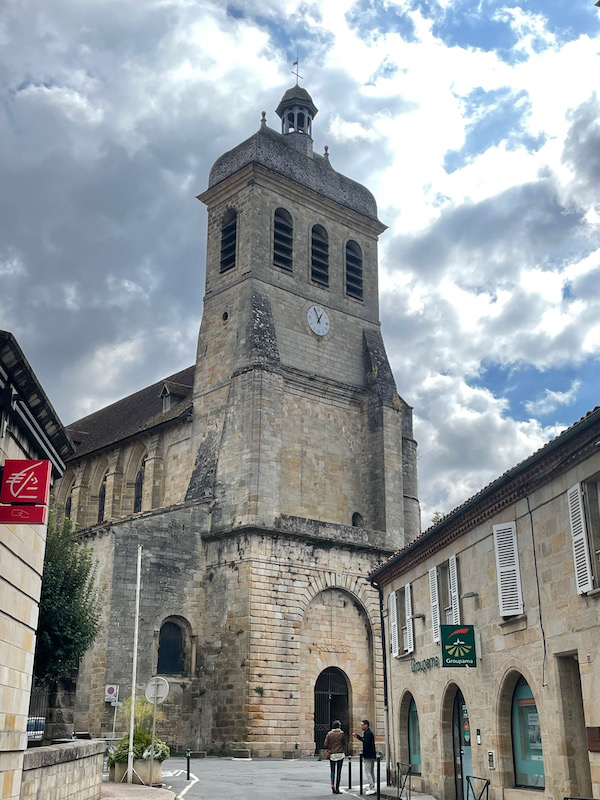
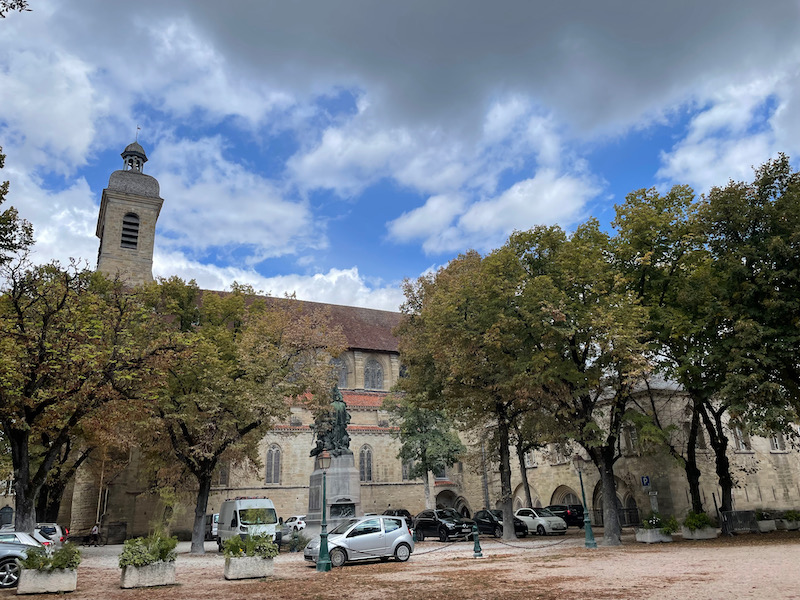
Inside you can see the high vaulted ceiling which is very typically Gothic. But if you peek at the arches on the right and left of the nave, they are very Romanesque.
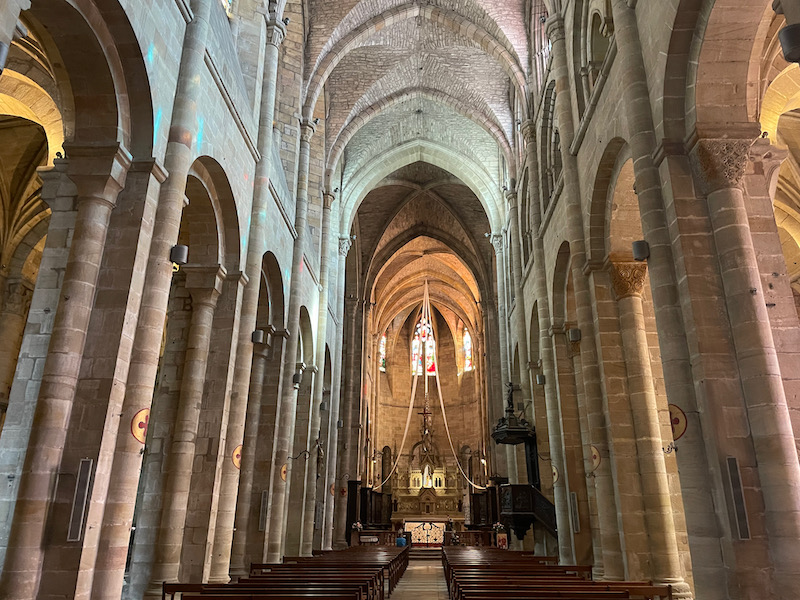
There were two side altars that I thought were especially nice, entirely done in wood and painted.
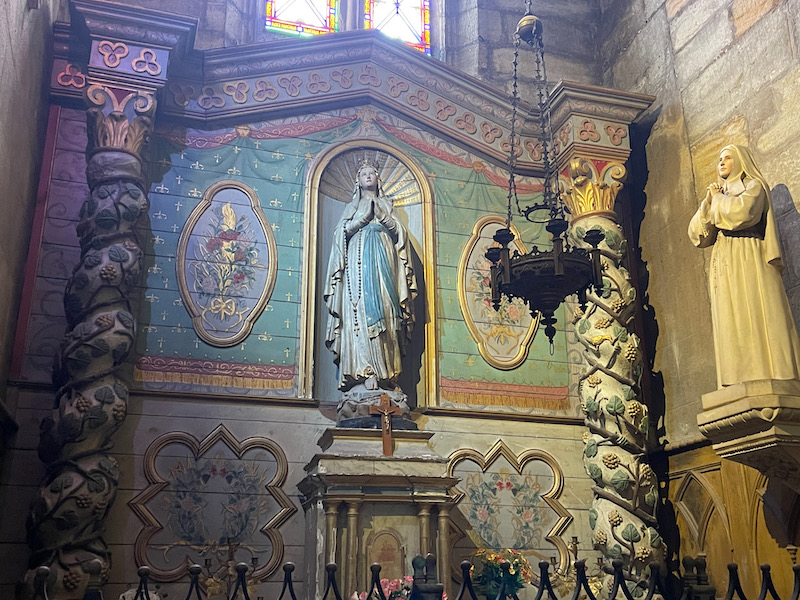
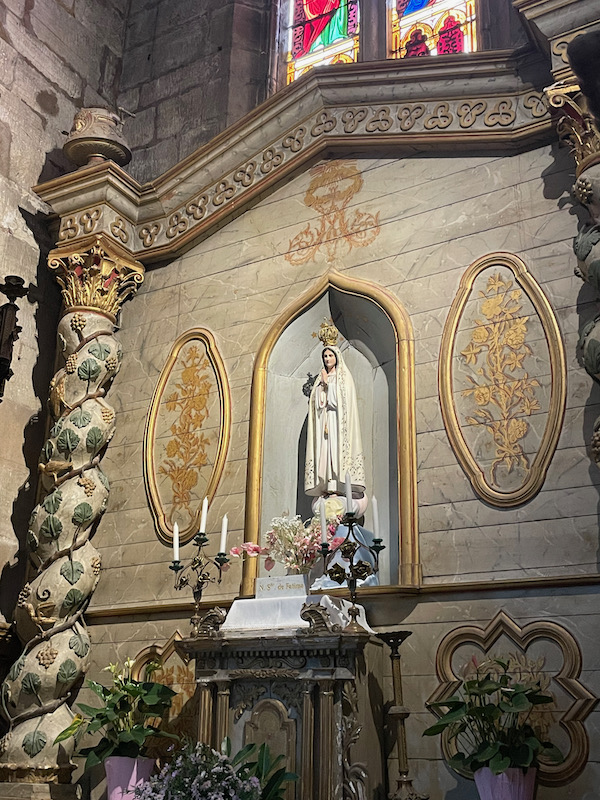
This is called Le Songe de Saint Martin or The Dream of Saint Martin. The Église Saint-Martin was destroyed during the Revolution but thankfully, this 17th century painted wood sculpture escaped the destruction. It is a large painted wooden panel and shows Saint Martin dressed in the red tunic of the Roman army asleep in a flowery meadow at the bottom. Above him, we see his dream ... the appearance of Christ, seated on a cloud, with Saint Peter in green and Saint Paul in red, holding a sword in his hands.
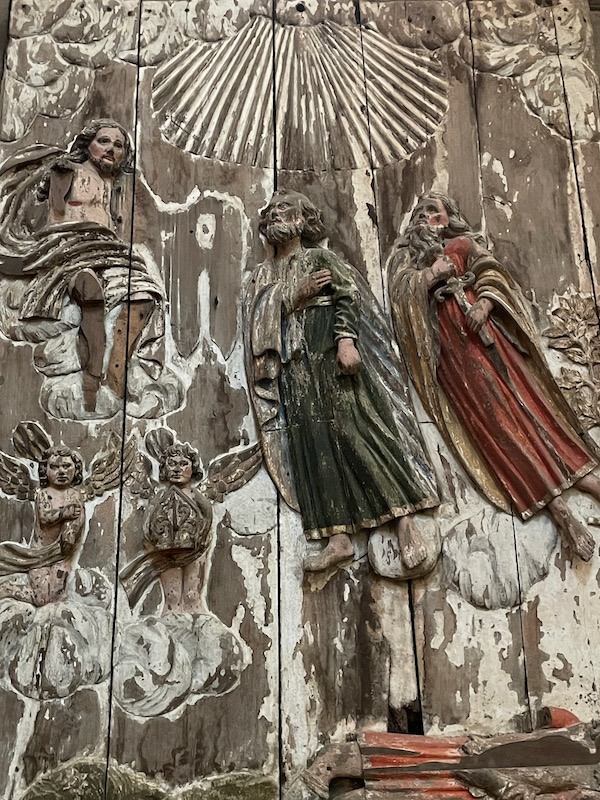
A couple pictures with the main altar and a statue of Joan of Arc.
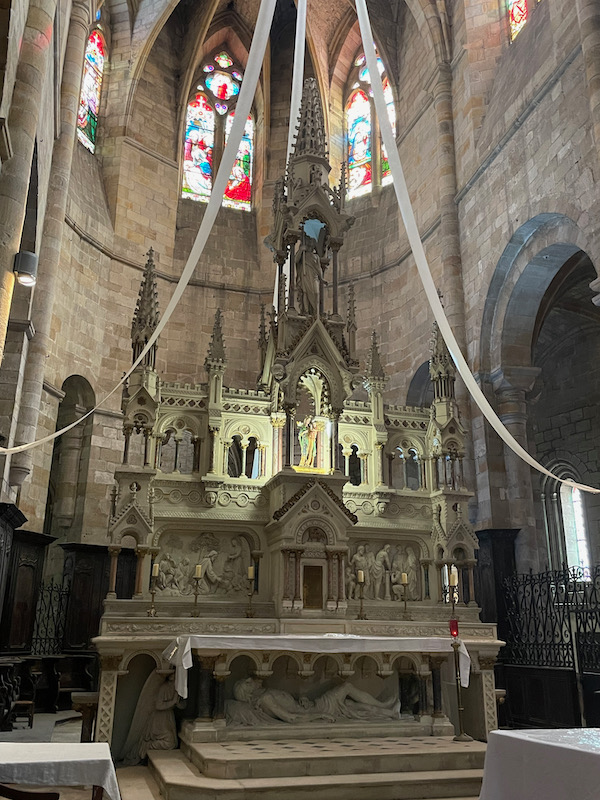
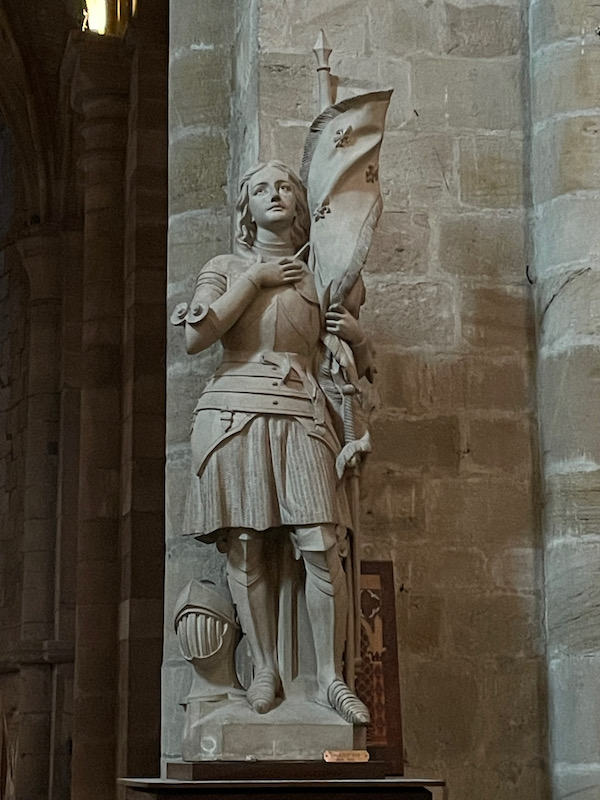
All of the stained glass windows in the main church were installed in 1872.
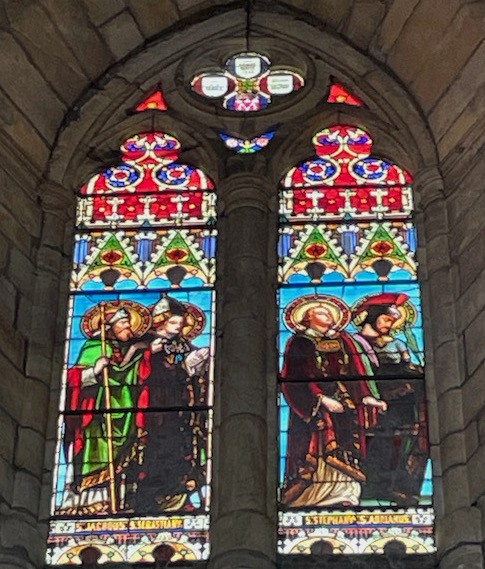
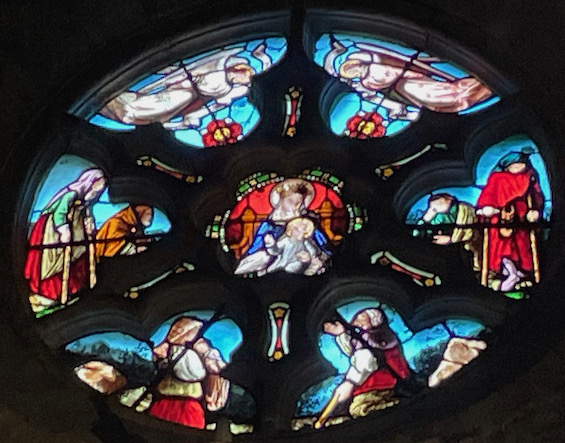
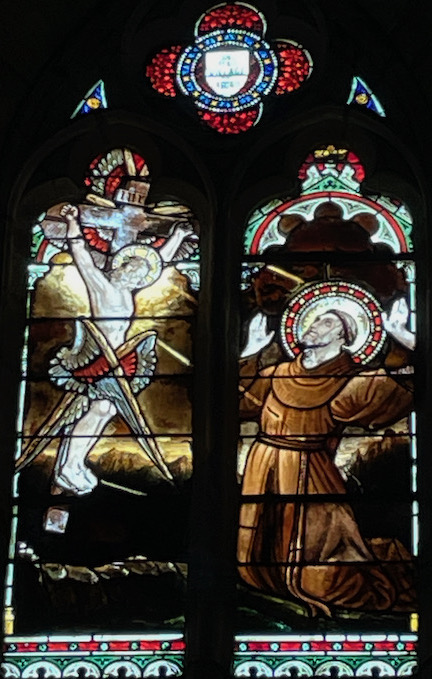
The abbey cloister was destroyed during the Revolution but the chapter house remained and is now the Notre-Dame-de-Pitié chapel. The wall on the left is adorned with polychrome bas-relief panels from the 17th century recounting the Passion of Christ. Then the back wall has additional carved and painted wood decorations from the second half of the 17th century. The one that I show (the 3rd picture) panels represent the Descent from the Cross. The altar here has another carved panel showing the Last Supper. The stained glass windows date from 1883.

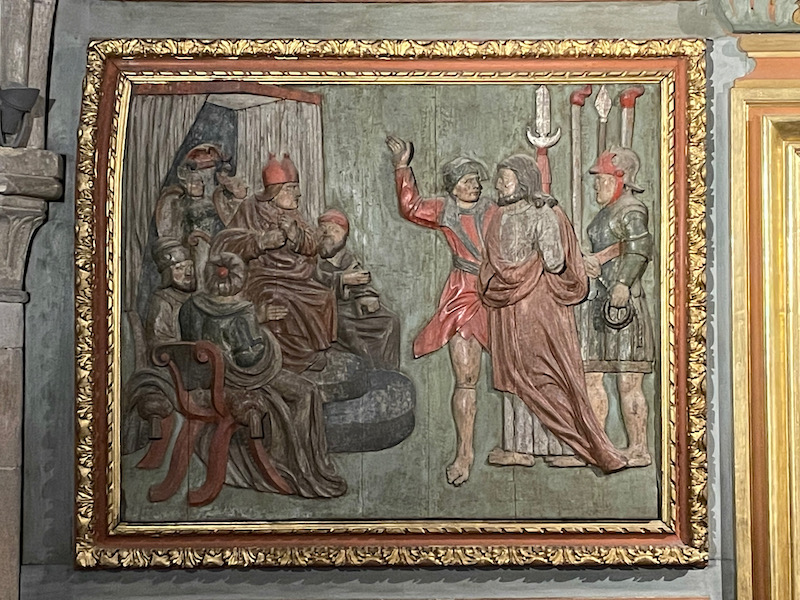
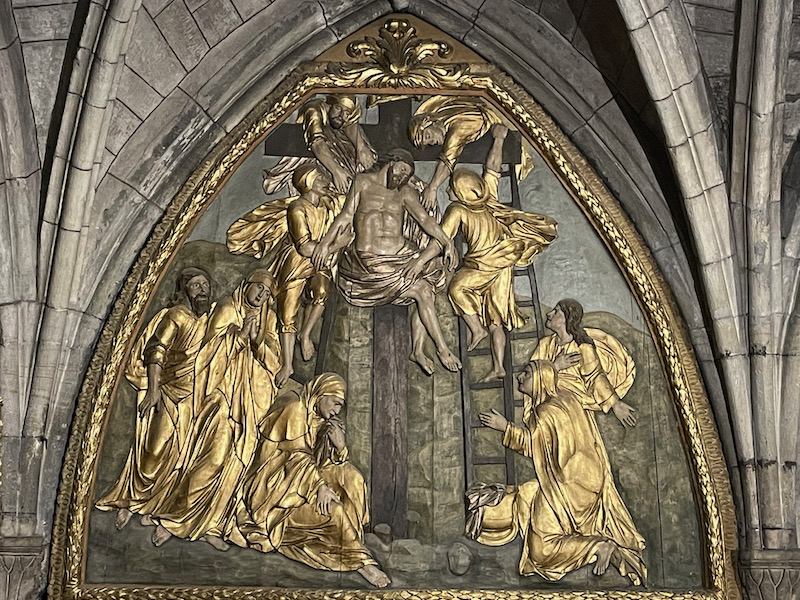
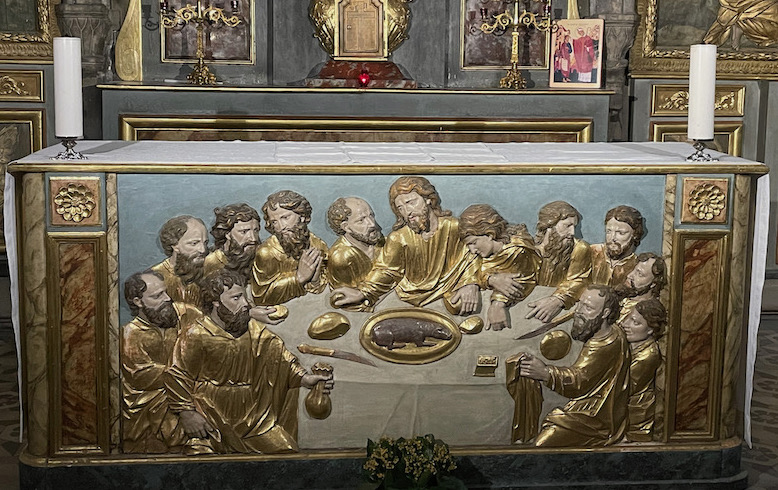
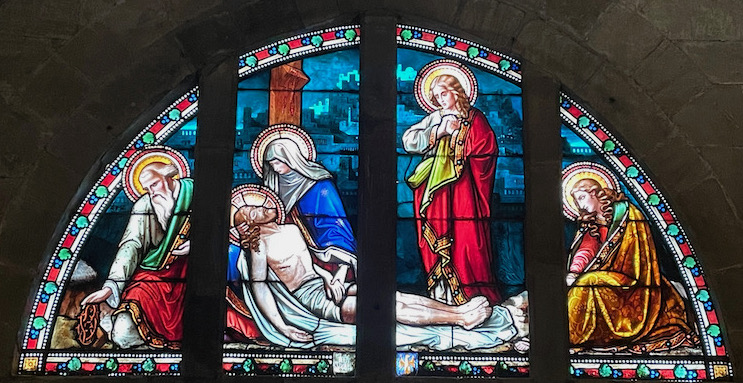
Hôtel Galiot de Genouillac has been extensively remodeled since the Renaissance and was the home of a Grand master of the artillery of King François I. This is his "city" home, and his Chateau d'Assier (30 minutes outside of town) is supposedly the most beautiful Renaissance building in the Figeac region. It is only open in the summer months, so we didn't visit it.
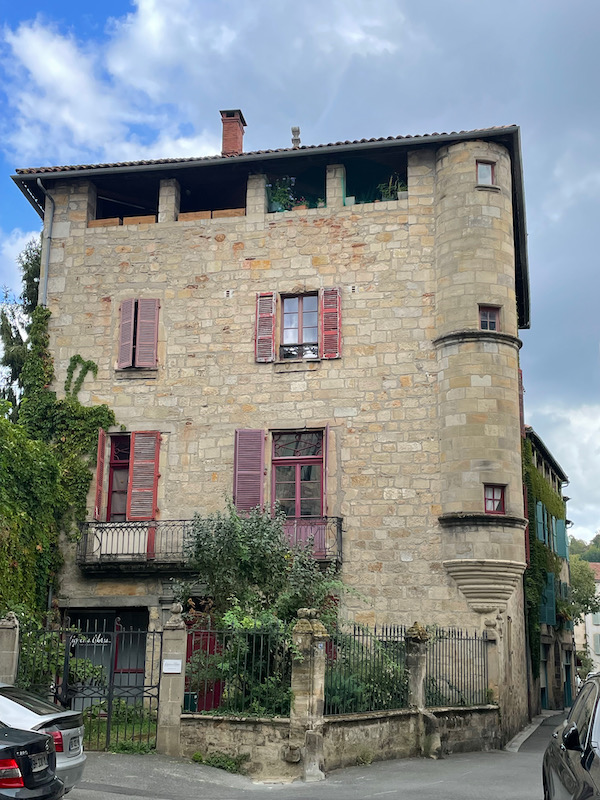
The Hôtel Dumont de Sournac is an imposing medieval residence that is remarkable for its high facade pierced with cross windows. If you look on the side, you can see the outline of the HUGE 14th century fireplace. In the Middle Ages, the owner of this house carried out a diplomatic mission in Egypt at the request of King Charles IV the Fair.
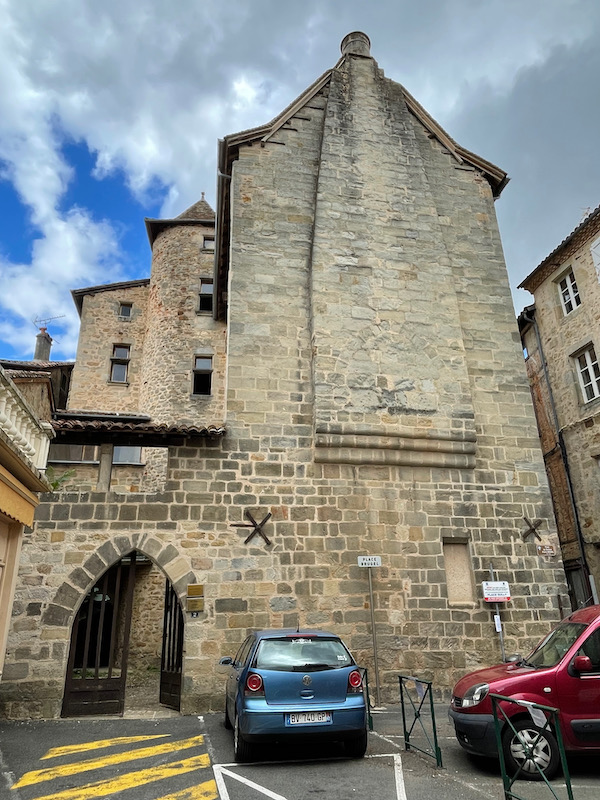
Place Carnot is one of two squares that have been the center of life in the city since the Middle Ages. Around them, the main streets correspond to the main roads that crossed Figeac in the Middle Ages. Today, the commercial activity of the place continues around the market hall, which still has a Saturday market. This house marks the landscape of Place Carnot with its high corner turret, erected in the 17th century.
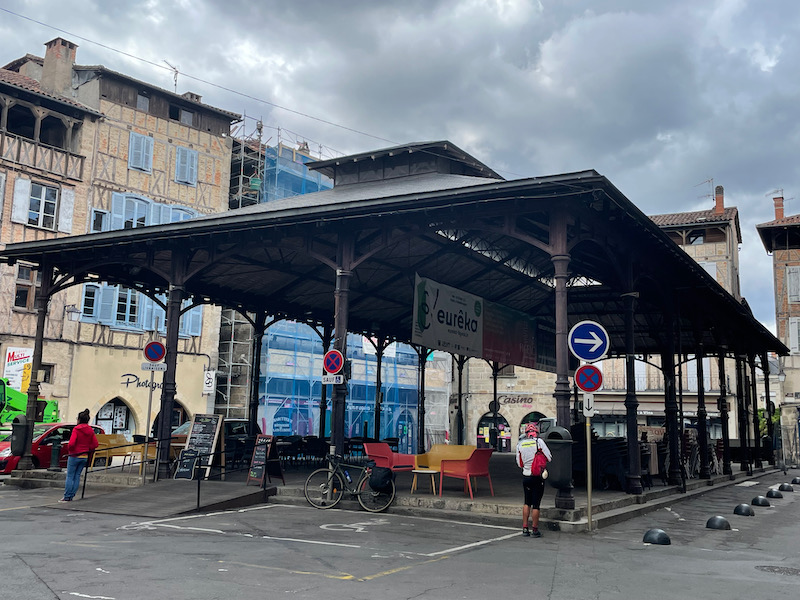
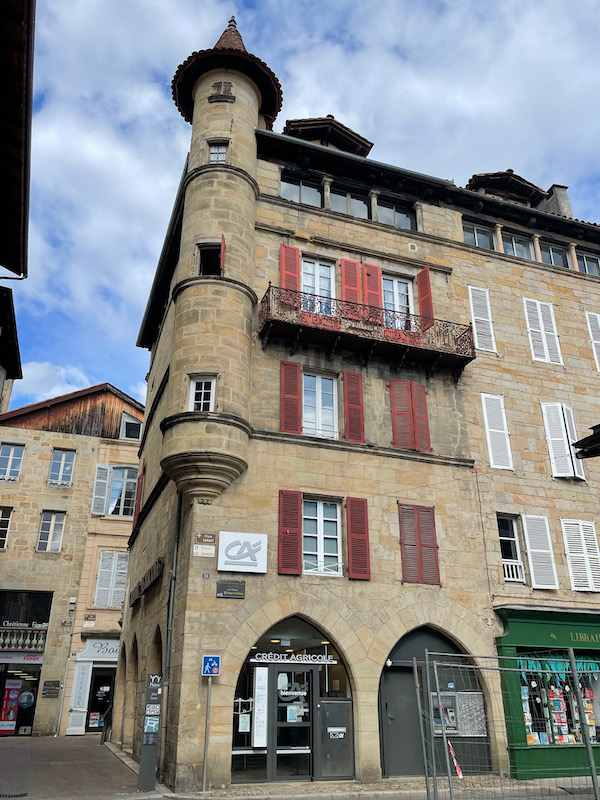
The other square, which is almost literally next door, is Place Champollion, named for Jean-François Champollion. Born in Figeac in 1790, he was the one who determined how to read Egyptian hieroglyphs after the discovery of the Rosetta Stone. One one side of the square is the birth home of Champollion, which now houses a museum named for him. Just across is this monumental 14th century Gothic façade is the jewel of Place Champollion. The house reveals the wealth and luxury tastes of the great merchant families on the eve of the Hundred Years War. These bourgeois, very active in the major markets throughout Europe, always kept a home in Figeac, even if they spent little time there.
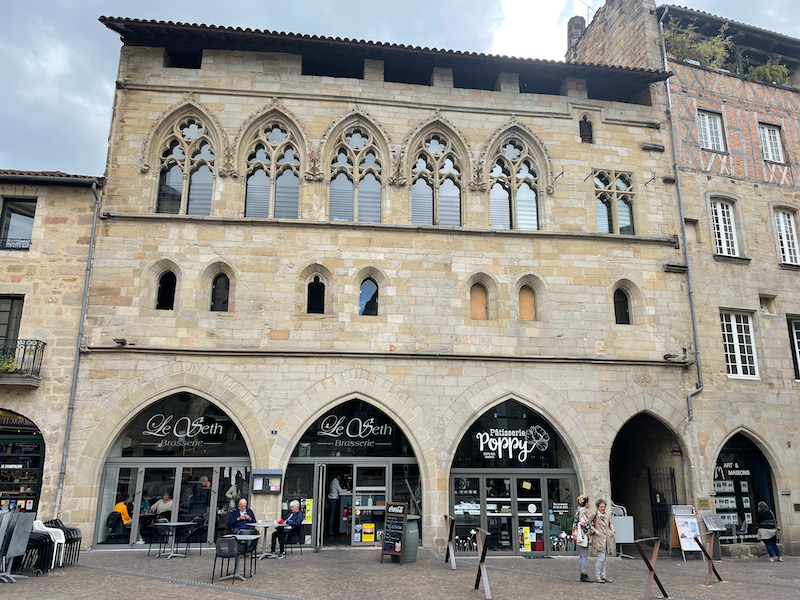
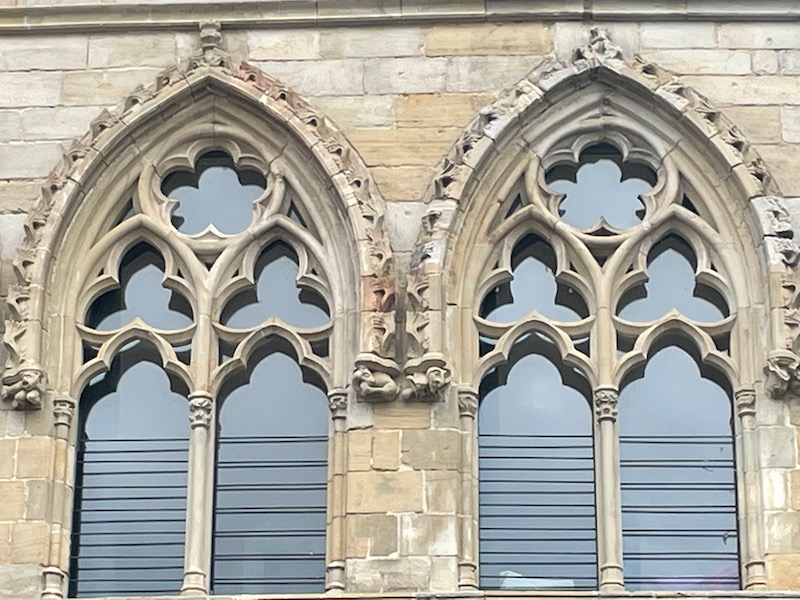
Also on the square is this house, called the Maison du Griffon. This house, which has been extensively remodeled since the Middle Ages, is the oldest in town having been built around 1175. Characteristic of the Romanesque style, it has the remains of sculpted windows upstairs and, on a capital, a small griffin which gave its name to the house. It was crowned by a half-timbered floor overhanging the square; the sculpted stones protruding from the facade supported this missing floor.
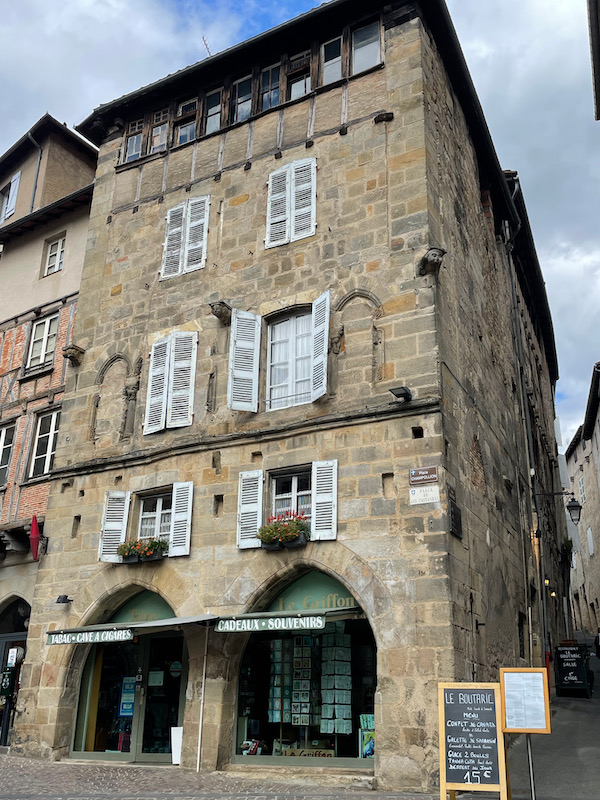
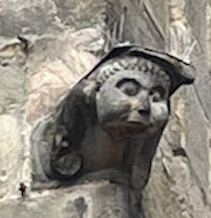
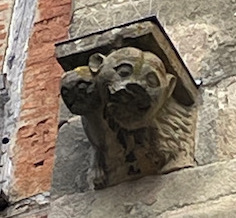
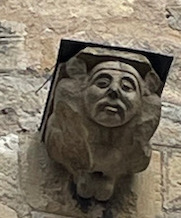
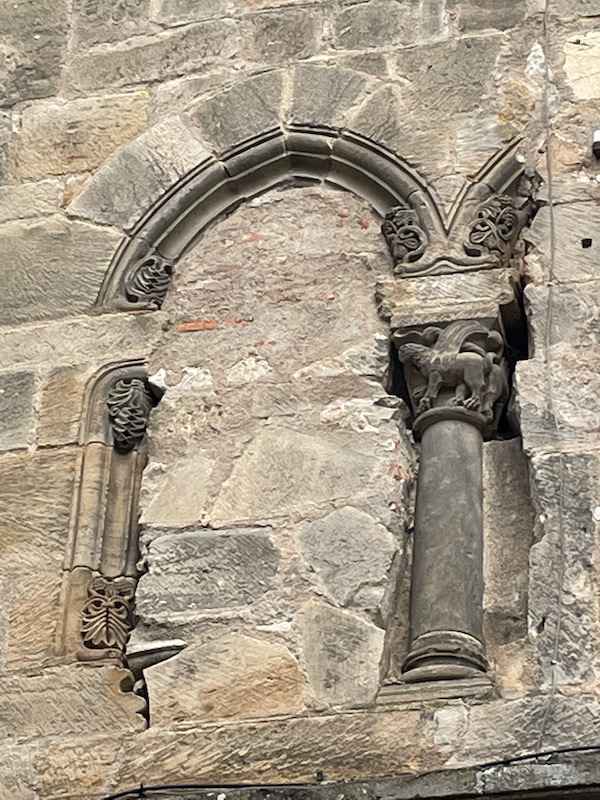
Place des Écritures is one of the most emblematic sites in town. It is actually a medieval courtyard bordered by a Gothic gallery. It is next door to the house where Champollion was born and the city decided to create this monumental reproduction of the Rosetta stone, which Champollion used to finally decipher hieroglyphics. The fragment of a stele written contains the same information in 3 languages: hieroglyphics, demotic, and Greek. This square is a work by the contemporary artist Joseph Kosuth, created in 1990 for the bicentenary of the birth of Champollion. Lucy decided it check out the "rosetta stone" up-close.
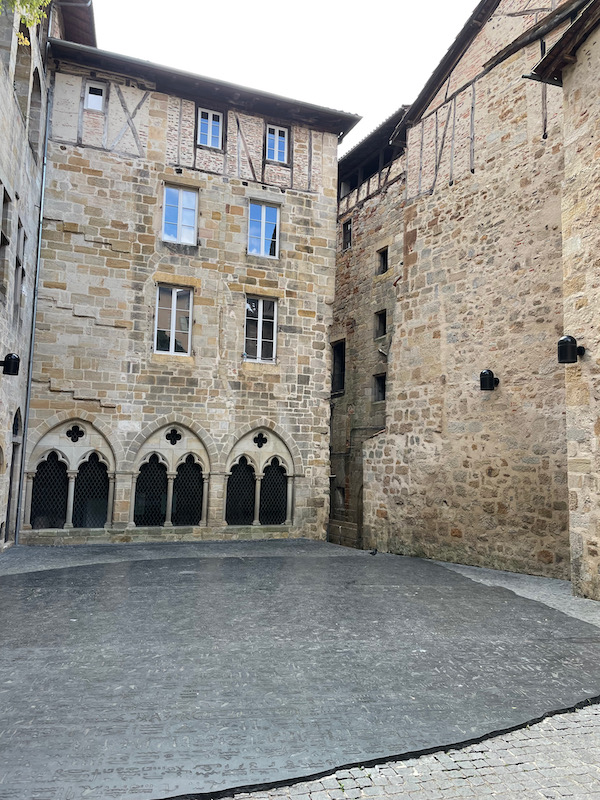
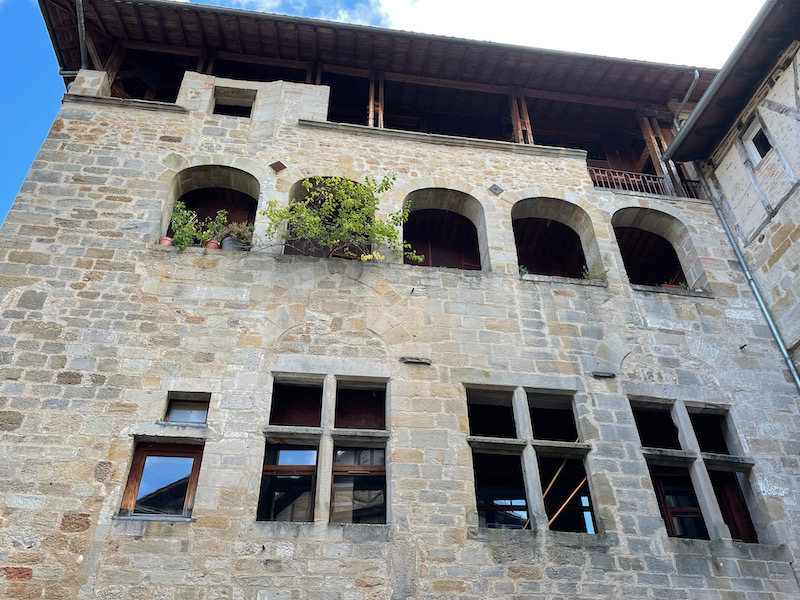

In the 14th century, the Viguier was the representative of the King of France in the city; he dispensed justice there in the name of the king. This high tower is the main vestige of his residence and had no military function: it symbolically recalled the royal power over the city.
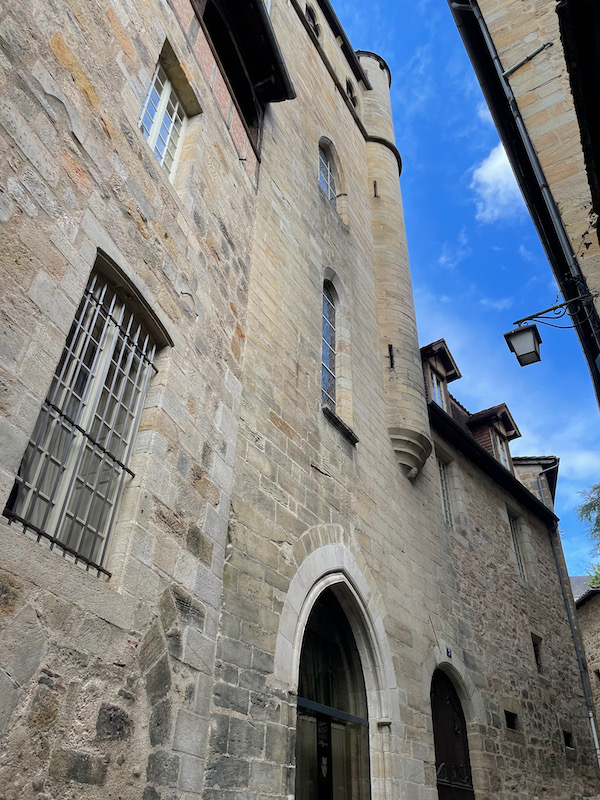
Église Notre-Dame-du-Puy is the oldest place of worship in the city. Before the creation of the Saint-Sauveur abbey, a Marian chapel was founded on this site. The current church dates from the 13th century, but was almost completely rebuilt after the Wars of Religion. In the 16th century, the Protestants had established a citadel here to control the city. After taking over Figeac, the Catholics dismantled the citadel and rebuilt the church.
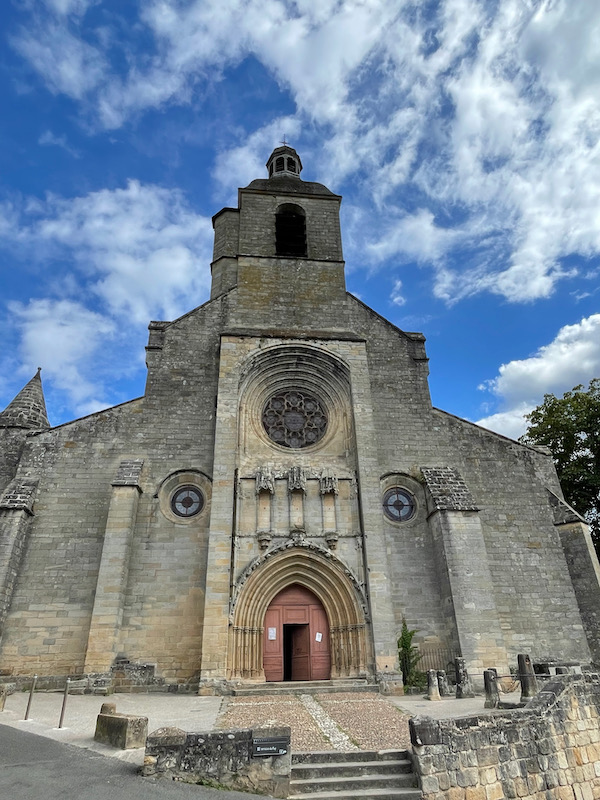
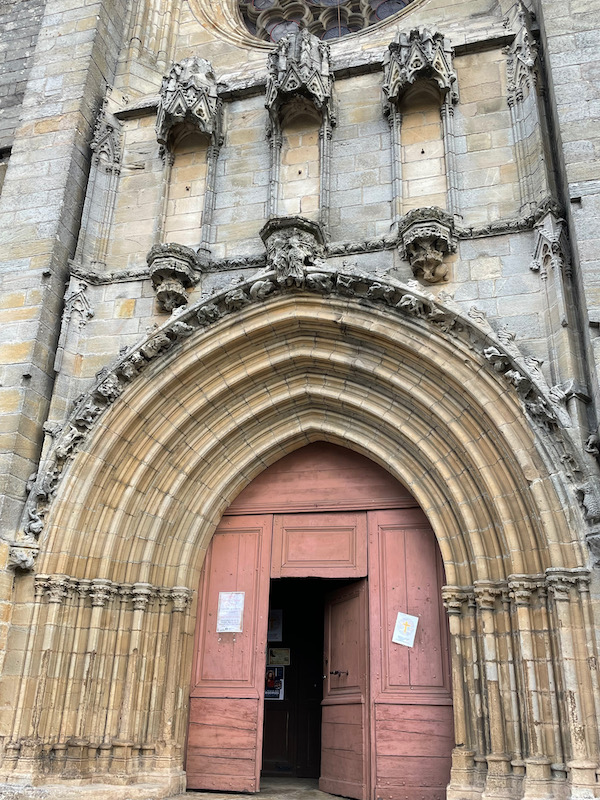
Inside, the layout and color was a little interesting. Right in the middle of the nave, on either side, are side altars. However, these are not in side chapels but rather, just put under the nave arch.
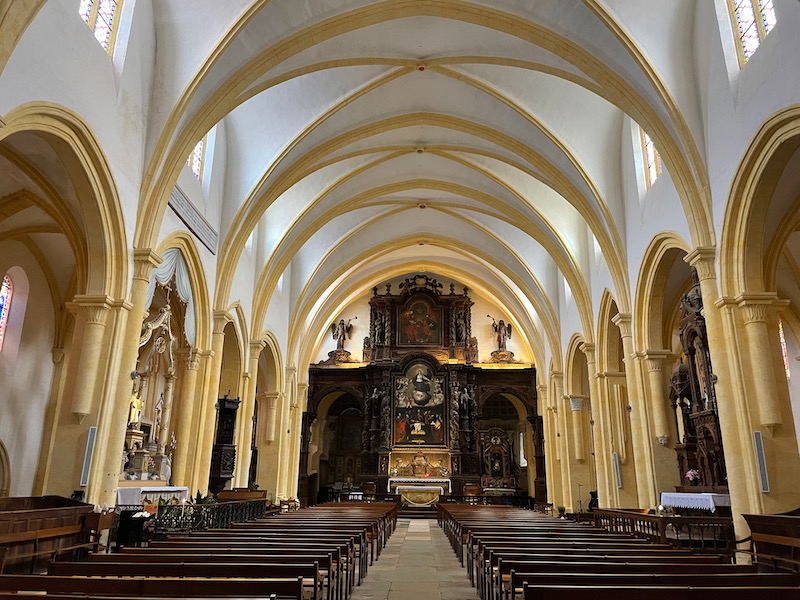
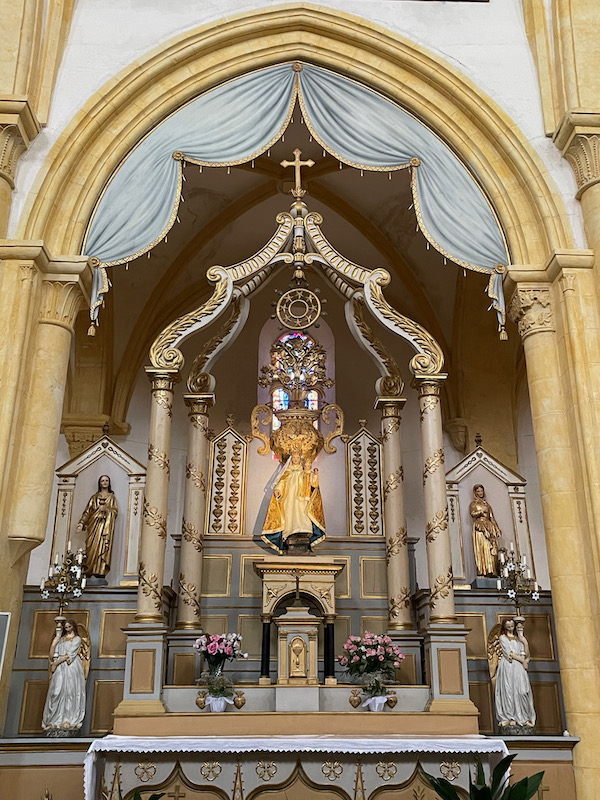
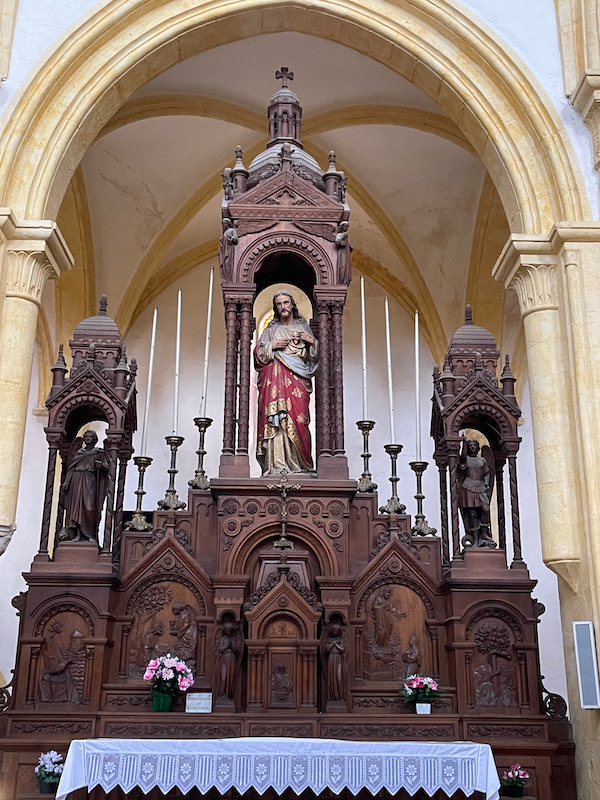
The main altarpiece is dedicated to the Virgin, and is the largest Baroque altarpiece in the French department of Lot.
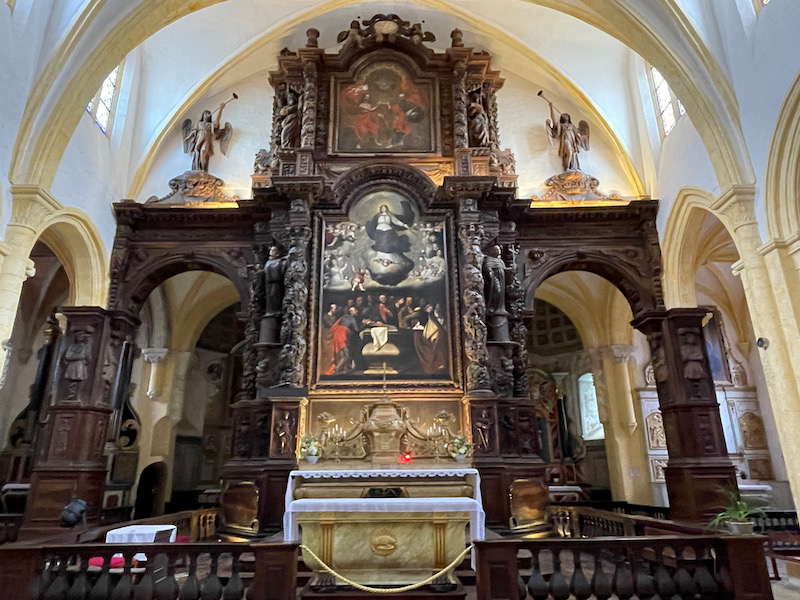
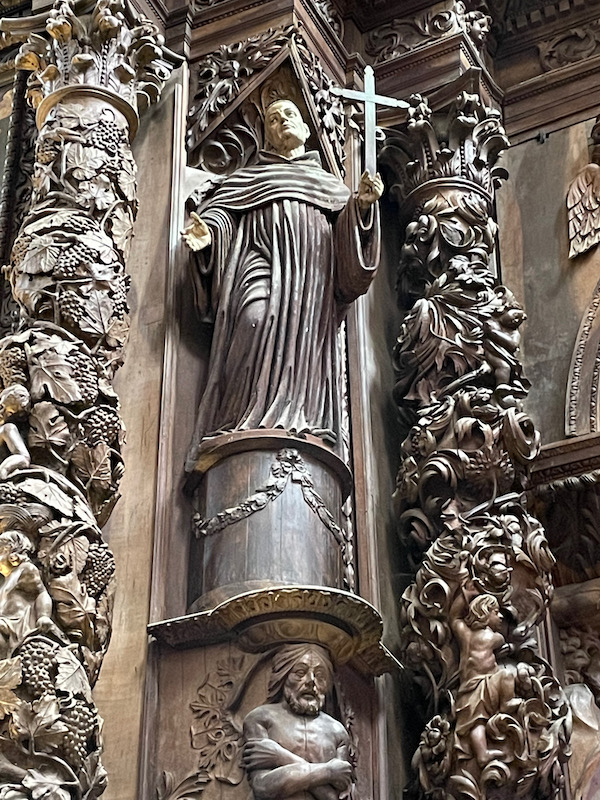
There is also a very colorful chapel on the right side of the main altar dedicated to Saint-Jacques de Compostella.
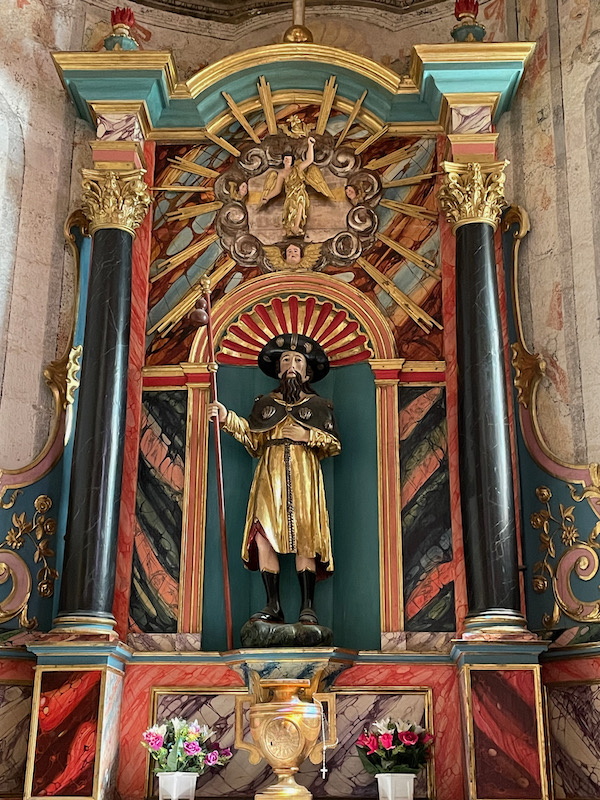
It wasn't sunny for much of the day, but the sun did come out long enough for me to get a nice view of one of the stained-glass windows shown on the church floor.
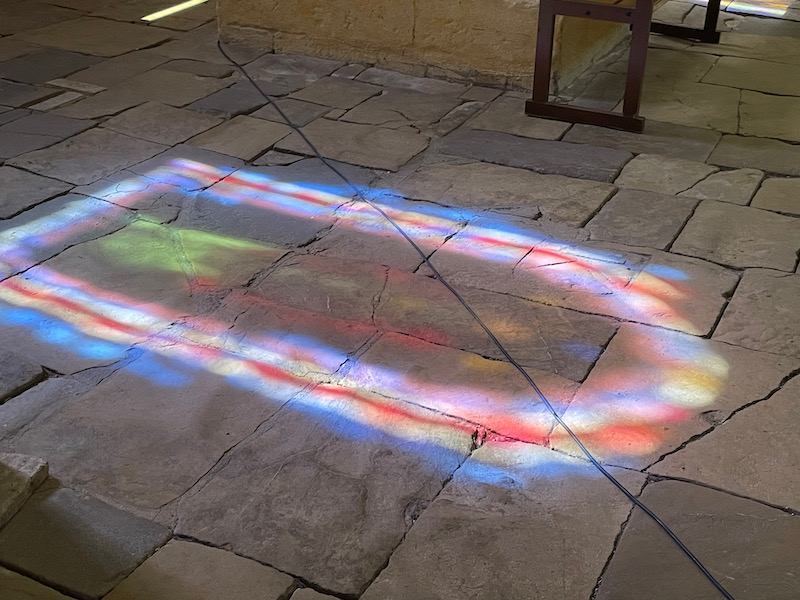
From the church, you can get a nice view of the surrounding area.
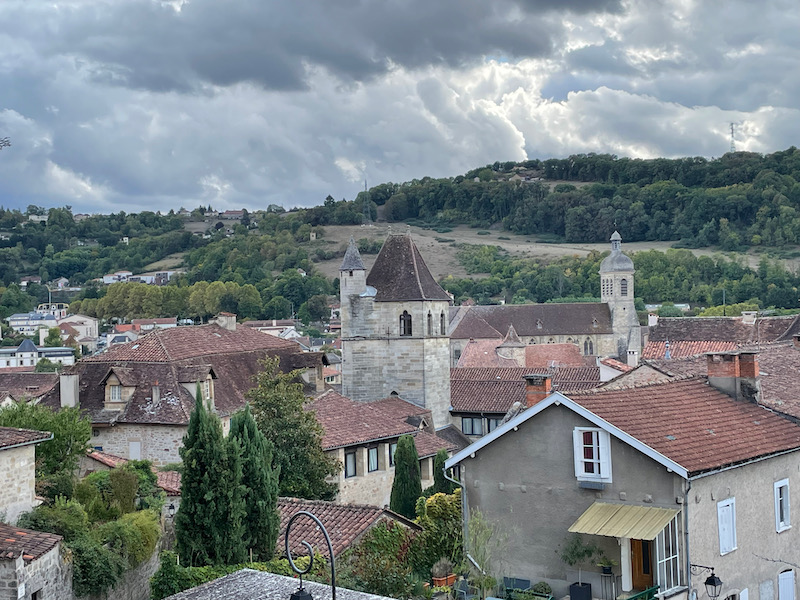
This is actually no longer a poissonnerie, but I thought that the decoration was amazing!
